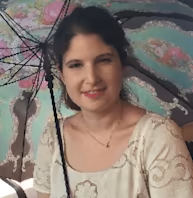Diamond Engagement Rings VS Wedding Rings | Rare Carat
There are many choices to be made when selecting what kinds of rings you want to wear to signal your engagement/marital status. Selecting either type of ring is an exciting process! However, choosing ring styles can be overwhelming. Let’s discuss how and why to choose diamonds to feature on your forever rings.
A Little History Lesson
The idea of wearing rings to publicly mark commitment between individuals is an ancient one. Some trace the tradition back almost 5000 years! These earliest rings were made from a variety of organic materials and metals like iron. The first recorded instance of a diamond engagement ring was that which was presented to Mary of Burgundy by Archduke Maximillian of Austria in 1477. However, the consistent use of diamonds in both engagement and wedding rings is more recent. As the historical supply of diamonds was unsteady, coupled with the lack of technology necessary to cut and facet diamonds, their regular use didn’t really begin until the seventeenth century. Since then, however, the tradition has spread across the globe.
The Engagement Ring
Let’s begin at the beginning: the engagement ring. Technically, an engagement ring symbolizes a promise, a signal to everyone that the wearer is in a committed relationship and intends to be legally wed. It may be given to an individual at the time when this promise is made, or it may be received at some point before the actual wedding ceremony.
Early Engagement Rings
During the first few centuries that women regularly wore diamond engagement rings, the quality of the mounting out-shadowed the stone(s) as diamond cutting technologies were still developing. As a result, most vintage settings feature relatively large and/or intricate mountings with expressive older-cut diamonds. These designs remain a unique option for many.
Modern Engagement Rings
As time progressed, the emphasis shifted from attributes of the mounting to the quality of the diamonds. Tiffany and Co introduced the diamond solitaire engagement ring in the late 1800s which accents a single prong-set diamond on a plain gold band. Solitaires remain among the most prevalent engagement ring designs. Round brilliant stones are a popular choice but may be substituted with fancy-cut diamonds for a personalized touch. When you couple this timeless design with the famous slogan, “a diamond is forever”, you can recognize that over time, a direct link has been forged between the wearing of diamond rings and romantic commitment.

When engagement rings feature significant diamond, the quality of the stones becomes paramount because they are so visible. Building on the solitaire template, halo settings and an addition of large or small side stones (diamond or not) are a great way to add extra flash. Individuals are willing to dedicate much of their budget on the diamond themselves. The guidelines set out by the GIA relating to the 4C’s can help you locate diamond(s) within your budget which have the attributes that you value most.

Men's Engagement Rings?
It should be noted that engagement rings for men are a growing trend. Men’s rings tend to be simple, highlighting metals with interesting finishes rather than large diamonds. However, they may include smaller diamonds which are set into the mounting itself. In this case, the matching of the stones, mostly in terms of color, is the important issue.
The Wedding Ring
Now, let’s consider the wedding ring. Whereas the engagement ring represents an intention, a wedding band reflects that an official commitment has been made. Most people consider the wedding ring to be a more serious and subdued affair when compared to the engagement ring. While the average price for engagement rings currently hovers in the $5,000-$6,000 range, the average cost of a wedding band is closer to $500-$1000. This price discrepancy is usually due to the lack of a significant diamond(s) in wedding bands. Instead, many people opt for a plainer look. Perhaps diamonds are present, but these tend to be much smaller and fastened into the mounting using either channel or pave settings. In short, wedding bands are typically less flashy and more wearable.

Matching Ring and Band - Does it Need to be Done?
The next question is: Do your diamond engagement and wedding bands need to match? You can purchase specific “bridal sets” which include complementary engagement and wedding rings. This is a convenient option which guarantees that both rings will match in terms of how they sit next to each other, the exact color of the metal, and any diamonds that are present. Often, however, engagement rings are selected individually before wedding rings are, sometimes without the direct input of the recipient. Coordinating different rings can be difficult if either or both rings have large diamond(s) with wide outlines which may not sit well adjacent to each other. Alternatively, you may even find that wearing two rings is a busier look than you are comfortable with for daily use. These issues may leave you wondering: Do you actually need to wear both rings at the same time? The answer is no – many people choose to wear only one ring at a time to alleviate these concerns.
What Finger Does the Ring Even Go On?
Moreover, depending on where in the world you live, engagement and wedding rings may be worn on different fingers. In the United States, it is traditional to wear both the engagement ring and wedding ring on your fourth finger on your left hand with the wedding band put on first. Conventions in other parts of the world split the engagement and wedding bands up and have them worn on different hands simultaneously. This is a convenient option if you have mixed-matched rings.

In the end, diamond engagement and wedding rings signify a beautiful commitment and you should wear them proudly and comfortably.

